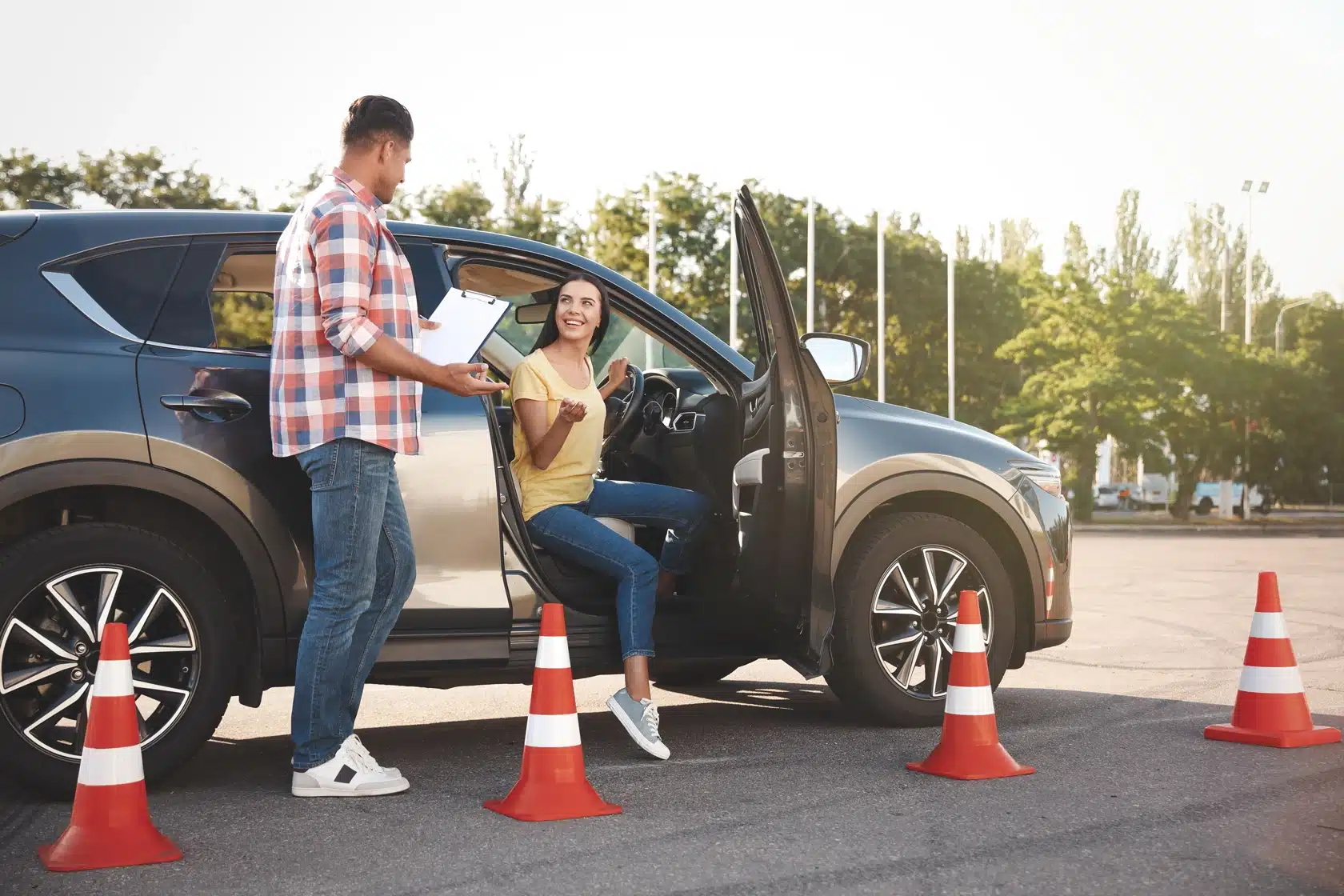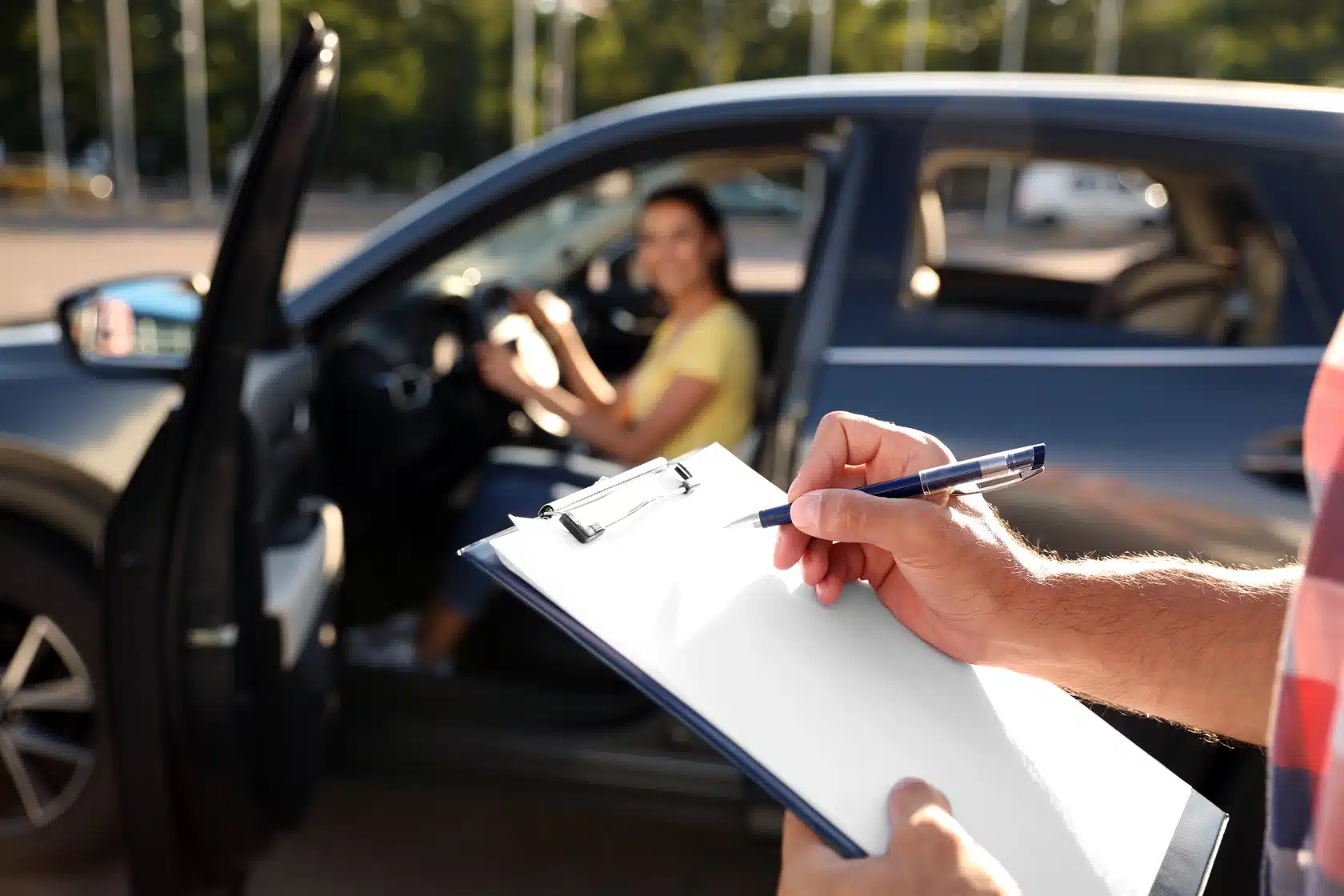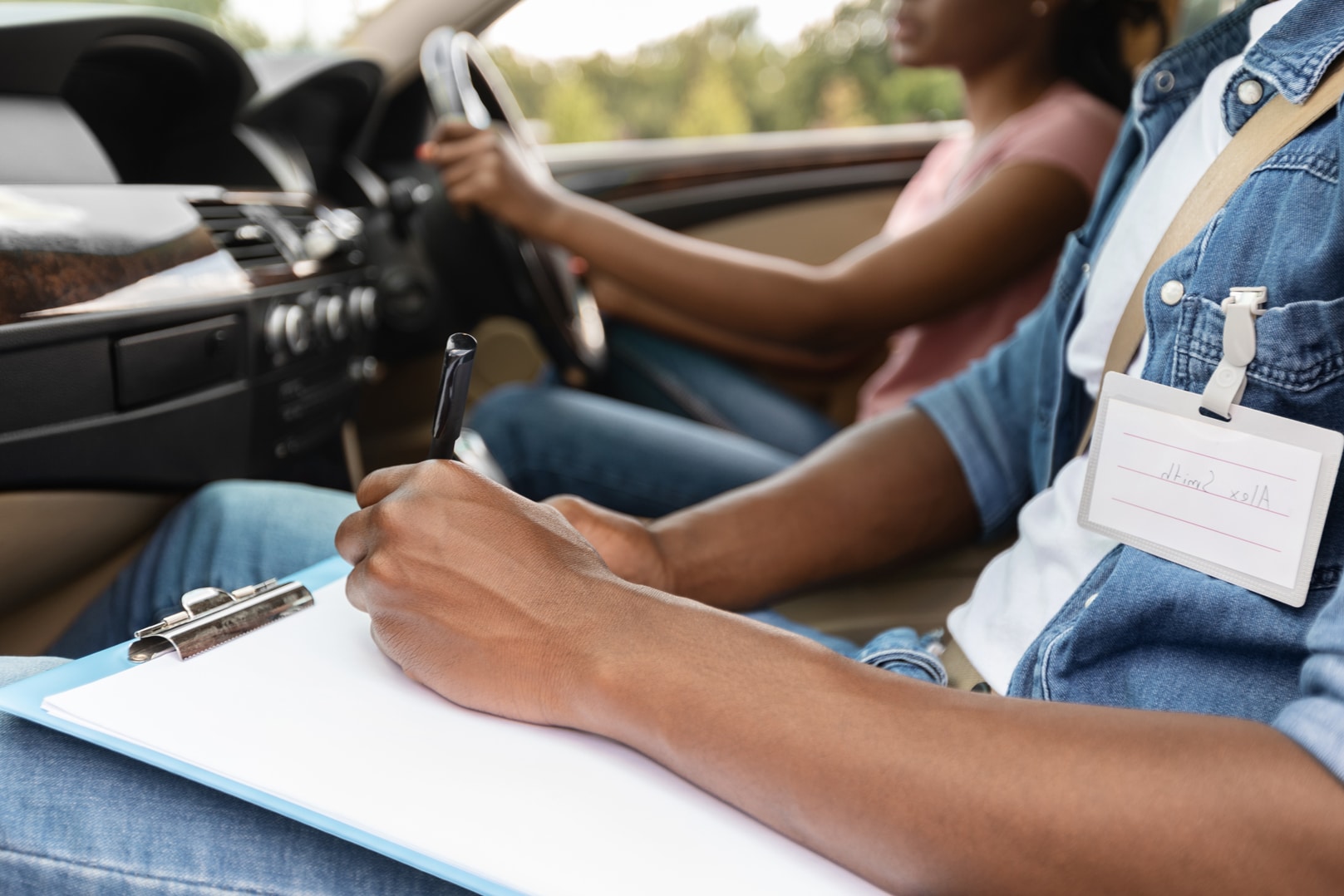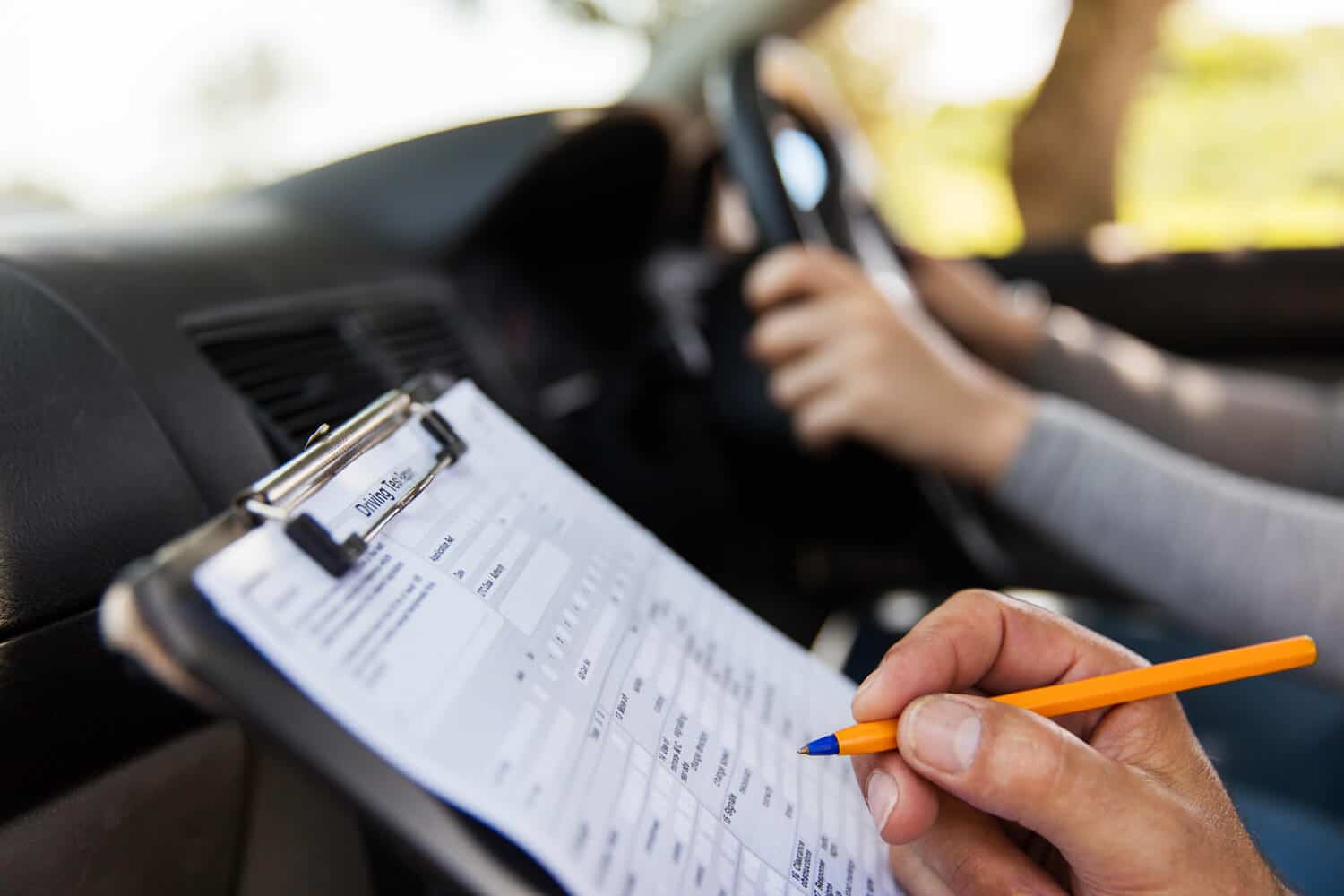A12 Night Closures – A Valuable Lesson for Colchester Learner Drivers
The A12, one of Essex’s busiest routes, is undergoing essential maintenance with overnight closures between junctions 29 and 33 (north of Colchester). While much of this work happens overnight, it still affects daytime traffic patterns, diversions, and congestion across the area.
For learner drivers in Colchester, this situation offers more than an inconvenience – it’s a chance to practise key driving skills that will serve you well long after you pass your test.
Understanding Roadworks and Diversions
Roadworks are an unavoidable part of driving life, and knowing how to approach them safely is vital. Even during the day, you may encounter:
- Temporary speed limits or narrowed lanes.
- Diversion signs rerouting traffic through unfamiliar roads.
- Increased congestion near key junctions like the A120 or Ipswich Road roundabouts.
Learners can use these situations to practise planning ahead, reading temporary signs, and managing stress in slower-moving traffic – all essential skills for confident, independent driving.
Why This Matters for Driving Lessons
Even if your lessons don’t take place directly on the A12, the surrounding network (such as Severalls Lane, Northern Approach Road, and Ardleigh) can be affected by changes in traffic flow. This provides realistic experience for handling unexpected conditions.
Instructors can help learners develop:
- Patience and focus when driving near construction areas.
- Confidence in following detour signage and temporary road markings.
- Awareness of road workers, barriers, and machinery, reinforcing safe following distances and mirror checks.
Practise Situational Awareness
Real driving is full of surprises – diversions, closures, or sudden congestion. The ongoing A12 works are a reminder that no two journeys are the same. Discuss with your instructor how to plan alternative routes or interpret unfamiliar signs using your satnav or the Highway Code.
If you’re preparing for your test at the Colchester or Clacton Test Centre, consider practising near areas affected by roadworks (where safe) to experience different types of hazards and decision-making moments.
Final Thoughts
The A12 maintenance project might cause some short-term disruption, but for learner drivers, it’s a long-term benefit. It creates real-life driving challenges that can’t be replicated on quiet test routes – from navigating diversions to staying calm under pressure.
When you’re behind the wheel, remember: a confident driver isn’t one who knows every road – it’s one who knows how to handle any situation safely.
So next time you see those orange signs and cones, take it as an opportunity to learn – not just to pass your test, but to become a skilled, adaptable driver for life.
Beaulieu Park Station — What Chelmsford Learner Drivers Need to Know
Chelmsford has made transport history with the opening of Beaulieu Park Station, the first new station on the Great Eastern Main Line in more than 100 years. For commuters, it’s a welcome addition that eases pressure on the main city station – but for learner drivers in Chelmsford, it introduces new traffic patterns, junction layouts, and learning opportunities.
If you’re taking lessons around the Beaulieu or Boreham area, here’s how this new station might affect your driving – and how you can use it to build confidence behind the wheel.
New Traffic Flows and Busier Junctions
The Beaulieu development already brought new housing, schools, and retail spaces – and now, the addition of a station means more vehicles entering and leaving the area throughout the day. Expect heavier traffic near:
- The A130 and A12 interchange (particularly during morning and evening peak hours).
- Roundabouts along White Hart Lane and Essex Regiment Way, which now handle additional commuter and bus traffic.
- Pedestrian crossings and drop-off zones near the station entrance.
For learners, this is ideal practice for anticipating hazards, planning roundabout approaches, and handling queues or merging traffic calmly. Ask your instructor to include Beaulieu Park in your lessons so you can experience real-life commuter conditions in a controlled, supportive way.
Perfect for Building Situational Awareness
Learning to drive in Chelmsford isn’t just about memorising test routes – it’s about being prepared for the ever-changing reality of modern roads. The Beaulieu Park area now includes new signage, road markings, and temporary works as final improvements are completed.
Try to notice how the new signs guide traffic and how local drivers react to changes. Understanding these small details helps you anticipate the actions of others and strengthens your ability to adapt – key skills for safe driving anywhere.
Lesson Ideas for Instructors & Learners
Driving instructors in Chelmsford can use the Beaulieu Park area to focus on:
- Roundabout discipline – handling multi-lane entries and exits calmly.
- Meeting situations – navigating narrow or busy side roads near new housing estates.
- Observation and planning – identifying hazards such as pedestrians crossing near the station or buses pulling out.
Learners, this is your chance to build resilience and flexibility. The more varied your practice routes, the more confident you’ll feel on test day — and beyond.
Final Thoughts
Beaulieu Park Station is great news for Chelmsford — and an excellent reminder that roads evolve constantly. As a learner driver, seeing how traffic adapts to new infrastructure helps you understand that good driving is about awareness, patience, and adaptability.
So next time you’re out for a lesson, take a drive past Beaulieu Park. It’s a chance to experience something brand new — and sharpen your driving skills for the real world.
Mastering the Colchester Driving Test: Routes, Tips & What to Expect in 2025
If you’re learning to drive in or around Colchester, there’s a good chance your practical driving test will take place at the Colchester Driving Test Centre, Grange Way, CO2 8HF. It’s one of the busiest test centres in Essex — and being prepared for its routes, road layouts, and common challenges can make all the difference on test day.
This guide covers what to expect, key local roads and junctions, and expert advice from instructors who know the area inside out.
Where Your Test Takes Place
The Colchester Driving Test Centre is located just off the A134 near the Hythe area. It’s surrounded by a real mix of driving environments — everything from tight residential streets to fast dual carriageways — which makes it a great place to prove you’re ready for anything.
What to expect around the test area:
- Busy roundabouts like Greenstead and St Andrew’s Avenue
- Multi-lane junctions on Cowdray Avenue and Ipswich Road
- Quieter estates used for manoeuvres (parallel park, reverse bay, etc.)
- Dual carriageways such as the A133 or A12 slip roads
- Steep hill starts in certain residential areas
Every examiner has their own routes, but these locations come up regularly — so it pays to be confident in all of them.
Common Colchester Test Routes & Challenges
Although official test routes aren’t published, learner drivers and instructors report similar patterns in Colchester. Here are a few of the most talked-about challenges:
- Greenstead Roundabout – one of the largest and busiest in town. Learners often struggle with correct lane choice and early positioning.
- Cowdray Avenue (A134) – fast traffic flow, merging lanes, and changing speed limits test your awareness and anticipation.
- Ipswich Road Retail Park area – frequent pedestrian crossings and bus stops can trip up drivers who don’t plan ahead.
- Residential estates near Parsons Heath – these are popular for manoeuvres and independent driving sections. Remember: drive at an appropriate speed and check mirrors constantly.
- Joining and exiting the A12 – you may need to accelerate briskly to join safely. Be ready to match the flow and check mirrors/blind spots before merging.
Common Reasons for Failing in Colchester
According to local instructors, the main issues that lead to test fails in Colchester are:
- Not using mirrors effectively before changing speed or direction
- Late lane changes at major roundabouts
- Unnecessary hesitation at junctions or when merging
- Incorrect positioning for turns or when stopping on narrow roads
- Speed awareness – particularly maintaining the correct speed on dual carriageways and quickly adjusting to 30 mph zones
Being aware of these can help you focus your practice in the right areas.
How to Prepare Effectively
Here’s how to set yourself up for success when preparing for your test in Colchester:
- Practise in test-centre conditions – Make sure your lessons include driving near Grange Way, Greenstead, and Cowdray Avenue. The more familiar these feel, the calmer you’ll be on test day.
- Drive at different times – Traffic in Colchester can vary dramatically between morning rush hour and early afternoon. Practising in different conditions helps you adapt.
- Brush up on roundabout discipline – Approach, position, and signal early. If you’re unsure, take a lesson focused purely on Colchester’s larger roundabouts.
- Perfect your manoeuvres – There’s often limited space in Colchester’s residential streets, so precision is key.
- Book a mock test – Your instructor can simulate real-test conditions around the Colchester routes. This helps reduce nerves and identify any weak areas early.
Bonus Tip: Seasonal Challenges
Colchester’s narrow residential streets can be tricky in autumn and winter. Fallen leaves, rain, and misty mornings reduce visibility — so practising with dipped headlights and smooth braking is essential.
Why Local Lessons Make a Difference
National chains don’t always understand local roads — but at Mutlows Driving School, our instructors live and work right here in Essex. That means we know exactly which junctions, roundabouts, and test-centre quirks are most likely to appear on your route.
We offer tailored driving lessons in Colchester
that prepare you for real-world conditions and the specific demands of the Colchester test centre. Whether you’re just starting out or getting ready for your final mock, we’ll make sure you’re confident, calm, and ready to pass.
Ready to Book?
Don’t leave your Colchester test to chance — book your lessons with a local team that knows the routes, the examiners, and the techniques that get results.
Important Update for Learner Drivers in Chelmsford: Your Driving Test Location Has Moved!
If you’re preparing for your practical driving test and live in or around Chelmsford (Essex), it’s vital to be aware of a significant change to the test-venue arrangement. This blog post explains the relocation in detail, how it affects your preparations, and how you can adapt your lessons accordingly.
What’s Changed?
Recent communications from the Driver and Vehicle Standards Agency (DVSA) confirm that from Monday 21 April 2025, car driving tests for learners who would normally go to Chelmsford are now being conducted at a temporary site:
9 Crittall Road, Witham, CM8 3DR.
The usual test centre at Chelmsford Museum (Oaklands Park) is unavailable due to roadworks in the area.
So, if your test booking still shows “Chelmsford”, make sure you double-check the location—it may now be Witham.
Why This Matters for You
Travel & Arrival – The Witham site is not in Chelmsford, so you’ll need to factor in extra travel time, parking considerations, and potentially unfamiliar access roads.
Familiarity of Route – If you’ve been practising with your instructor around the usual Chelmsford routes, you may now face different starting/exit roads or initial test-centre approaches. That can increase anxiety if you don’t prepare for it.
Parking & On-site Logistics – The DVSA bulletin confirms the temporary site has a waiting room, toilets and parking available. But you should still arrive early to allow for walking from your car and orientation.
Clear Communication – Make sure your instructor, or you if you’re booking individually, have confirmed the shift and planned accordingly. Mistakes in venues have caused last-minute stress for some learners.
What You (and Your Instructor) Should Do to Adapt
- Visit the new test location in advance: Take a short drive to 9 Crittall Road, Witham and familiarise yourself with access, parking and route options.
- Plan your journey from home or lesson pick-up: If you’re based in Chelmsford, map your route to Witham ahead of time and factor in traffic (especially on the A12 or other major links).
- Incorporate lesson time for test-centre travel: Use one of your lessons to practise the drive to Witham so that you arrive relaxed on test day—not rushed.
- Practise on different road types: With the shift in venue you may encounter unfamiliar roads, so your lessons should include dual carriageway, country lane, and Witham area roads as well as the familiar Chelmsford ones.
- Check your confirmation email: Always verify your booking details—especially the test centre address. It’s your responsibility to turn up at the correct location.
- Arrive early and calm: Aim to be at least 10 minutes early, allowing time for parking, walking to the test centre and settling in. A calm start helps you perform better.
- Treat this as a positive: Changing venue might feel like a complication—but it can actually train you for the unexpected. On test day there’s always something new; your experience of “new roads” now gives you a head-start.
If you’re a learner driver in the Chelmsford/Essex area and your test is coming up, don’t wait until test-day to discover this venue change. With the right preparation you’ll walk into your test feeling confident, not blindsided.
At our school, we specialise in driving lessons in Chelmsford that cover not just the usual local routes but also the updated test centre in Witham — so you’ll be ready for whatever the examiner throws at you.
Book your next lesson today and let us help you arrive at your test fully prepared — no surprises, just success.
How to Stay Calm Before (and During) Your Driving Test
Whether you've had 10 lessons or 50, it’s completely normal to feel nervous on driving test day. But nerves don’t have to get the better of you! Here are some tried-and-tested tips to help you stay calm, confident, and focused from start to finish.
🧘♂️ 1. Breathe—Literally
Before your test, take a few minutes to do deep, slow breathing. This helps slow your heart rate and tells your body you're safe (even if your brain is panicking!).
Quick tip: Try the 4-7-8 technique: Breathe in for 4 seconds, hold for 7, and out for 8.
📆 2. Give Yourself a Calm Morning
Plan your morning to avoid rushing. Eat something light, stay hydrated, and arrive at the test centre with time to spare. Stress loves chaos—so keep things chill and predictable.
🧠 3. Trust the Process
Your instructor wouldn’t put you forward if you weren’t ready. You’ve practiced, learned, and probably already handled tougher situations in lessons than what you’ll face in the test.
🎧 4. Use Music or a Podcast to Chill Out
On the way to the test centre, listen to something familiar and calming—your favourite songs or even a podcast that distracts your brain a bit.
👀 5. Focus on One Step at a Time
Don’t think about the whole test. Focus on this junction, this mirror check, this manoeuvre. Breaking it down keeps your brain from spiraling.
🧍♂️ 6. Think of the Examiner as a Passenger
It’s just another person in the car—not someone waiting for you to fail. They genuinely want you to pass and stay safe.
❤️ 7. Be Kind to Yourself
If you make a mistake, don't let it throw you. Everyone makes little errors—even people who pass! Just breathe, reset, and carry on.
✨ Final Thoughts
It’s totally okay to feel nervous. It means you care. But with the right mindset, some solid preparation, and a few calming techniques, you’ll be in a much better place to show what you can do.
10 Tips for Passing Your Driving Test First Try
Passing your driving test on the first try is a huge achievement, and with the right preparation, it's absolutely possible! Many learner drivers feel anxious about their test, but with some practical tips and guidance, you can increase your chances of success. Here are our top 10 tips to help you ace your driving test on the first go!
1. Practice, Practice, Practice
One of the most important factors in passing your driving test is getting plenty of practice. Make sure you're comfortable with all the basic driving maneuvers, like parallel parking, three-point turns, and emergency stops. The more you practice, the more confident you'll feel on test day. Aim for a variety of practice scenarios, including driving in different weather conditions and at various times of day.
2. Know Your ‘Show Me, Tell Me’ Questions
At the beginning of your driving test, you may be asked some ‘Show Me, Tell Me’ questions. These are designed to test your knowledge of the vehicle, such as how to check tyre pressure or demonstrate how the windscreen washers work. Familiarise yourself with these questions ahead of time, so you're not caught off guard. Practicing them regularly will help you answer confidently.
3. Take a Mock Test
Booking a mock driving test with your instructor is a great way to simulate the real thing. It helps you get a feel for the format, timing, and pressure of the actual test. Your instructor can also provide valuable feedback, highlighting any areas that need improvement before the real exam.
4. Brush Up on Road Signs and Rules
Make sure you have a solid understanding of the highway code, including road signs, signals, and rules. Many learner drivers overlook this aspect, focusing solely on practical skills. However, the driving examiner will be looking for your ability to identify and follow road signs correctly. Spend some time reviewing the theory to ensure you know what each sign means.
5. Get Comfortable with Your Test Route
While your driving test could take you on any route, most test centers have a few common routes they tend to use. Ask your instructor to go over these potential routes with you, so you’re familiar with the roads, junctions, and potential challenges you might face. Getting comfortable with your local area can significantly boost your confidence.
6. Don’t Rush into Booking Your Test
It can be tempting to book your driving test as soon as you reach the minimum lesson requirement, but make sure you’re fully prepared. Only book the test when you and your instructor agree that you're consistently driving at test-ready standard. A little extra preparation time can make all the difference in passing the first time.
7. Keep Calm and Manage Your Nerves
It’s completely normal to feel nervous before a driving test, but keeping your nerves under control is crucial. Practice deep breathing techniques, visualisation, or any other relaxation method that works for you. Remind yourself that it’s okay to make minor mistakes during the test; staying calm is more important than perfection.
8. Pay Attention to Mirrors and Observations
During the driving test, the examiner will be paying close attention to your use of mirrors and observations. Make sure to check your mirrors regularly, especially before changing lanes, turning, or slowing down. Proper mirror checks and blind spot observations demonstrate that you’re a safe and aware driver.
9. Drive Defensively
Defensive driving is key to passing your test. This means keeping a safe distance from other vehicles, anticipating potential hazards, and avoiding sudden or aggressive maneuvers. Show the examiner that you can drive calmly and handle unexpected situations with ease. Remember, it's better to be cautious and steady than to rush.
10. Prepare Everything the Night Before
Get yourself test-ready the night before. Make sure you have all the necessary documents, like your provisional license and theory test pass certificate. Ensure the car you're using for the test is ready, with everything working correctly, including indicators, brakes, and lights. Get a good night’s sleep so you wake up feeling rested and alert.
Final Thoughts
Passing your driving test on the first try is all about preparation, practice, and staying calm under pressure. Follow these tips, and you'll be well on your way to getting that coveted pass certificate. Remember, your driving instructor is your best resource, so don’t hesitate to ask for help with any areas where you feel unsure.
Good luck, and happy driving!
Ready to book your driving lessons or schedule a mock test? Contact Mutlows today, and let’s get you on the road to success! Our experienced instructors are here to guide you every step of the way.
Overcoming Fear and Anxiety: A New Driver's Guide to Psychological Well-being While Learning to Drive
Learning to drive is a significant milestone in anyone’s life. It brings a sense of independence and freedom, but for many, it also introduces a level of fear and anxiety that can be challenging to manage. Understanding and overcoming these feelings is crucial not only for passing your driving test but also for enjoying the experience of driving. Here, we explore practical strategies to help you conquer these common fears and become a confident driver.
Recognise and Acknowledge Your Fear
The first step in overcoming any fear is acknowledging it. It's entirely normal to feel anxious about controlling a large, fast-moving machine, especially when you're responsible for your safety and that of others. Begin by identifying specific fears. Are you worried about accidents, getting lost, or not being able to operate the controls smoothly? Once you know what scares you, you can address it directly.
Start Small and Take Gradual Steps
If the idea of driving feels overwhelming, start with small, manageable steps. You might begin with learning about the car itself before even starting the engine—get comfortable with adjusting the seats, mirrors, and understanding the dashboard. Then, progress to turning on the car and using controls like wipers and lights in a parked position. Gradually build up to driving in quiet, low-traffic areas before tackling busier roads.
Use Visualisation Techniques
Visualisation is a powerful tool used by athletes and professionals to improve performance and calm nerves. Spend time each day visualising a successful driving experience. Picture yourself turning on the engine, smoothly operating the pedals, and navigating traffic confidently. Positive visualisation can build a mental habit that influences your actual driving experience.
Practice Mindfulness and Breathing Exercises
Mindfulness and controlled breathing are excellent for reducing anxiety. Practice mindfulness by being present in the moment and focusing on your breath. When you’re in the car, if you start to feel anxious, try deep-breathing exercises. Inhale slowly for five seconds, hold for three seconds, and exhale for seven seconds. This can help reduce your heart rate and calm your mind.
Learn at Your Own Pace
Everyone learns at a different pace, and it’s important to communicate with your driving instructor about how fast or slow you want to go. A good instructor will adapt lessons to suit your comfort level, ensuring that you don’t feel rushed. Remember, it’s not a race—it’s about building confidence and skill at a pace that feels right for you.
Consider Professional Help if Needed
If your anxiety feels unmanageable, consider seeking help from a professional therapist. Therapies like Cognitive Behavioral Therapy (CBT) can be incredibly effective in managing phobias related to driving. Sometimes, just a few sessions can make a significant difference in how you perceive and react to the act of driving.
Celebrate Each Success
Every time you drive, make a note of what went well. Celebrating small victories can boost your confidence. Perhaps you made a smooth U-turn or managed to drive in slightly busier traffic than usual. Acknowledging these successes helps shift your focus from fear to a sense of achievement.
Driving lessons shouldn’t be a source of fear but a joyful, liberating experience. By taking these steps to manage your anxiety, you’ll not only be safer on the road but will also enjoy the journey of becoming a skilled driver. Remember, it’s perfectly okay to take the time you need to feel comfortable and confident behind the wheel.
Mastering Parallel Parking: A Step-by-Step Guide
Parallel parking is often regarded as one of the most challenging manoeuvres for new drivers. The idea of squeezing a car into a tight space between two others can be intimidating. However, with the right approach and practice, mastering parallel parking is well within reach. In this step-by-step guide, we will break down the parallel parking process and offer valuable tips to help you conquer this essential driving skill.
Step 1: Find the Right Parking Space
The first step to successful parallel parking is finding an appropriate spot. Look for a space that is at least one and a half times the length of your vehicle and has enough room in front and behind the space. Ensure there are no obstructions and activate your turn signal to indicate your intention to park.
Step 2: Position Your Vehicle
Once you've identified a suitable spot, pull up beside the car in front of the space. Align your rear bumper with the rear bumper of the parked car. Leave a safe distance of about two to three feet between the two vehicles.
Step 3: Reverse and Angle Your Car
Shift your car into reverse gear and begin to turn the steering wheel to the right. Check your mirrors and look over your right shoulder to observe the rear of your car. Slowly back up while keeping the car at a 45-degree angle to the curb. Aim to position your vehicle parallel to the parked car in front.
Step 4: Straighten the Wheels
Once your front door aligns with the rear bumper of the parked car, straighten your wheels by turning the steering wheel to the left. Continue backing up slowly until your car is parallel to the pavement, leaving a reasonable distance between your vehicle and the one behind.
Step 5: Final Adjustments
At this point, you should be parallel to the curb with your car appropriately positioned within the designated space. If you're not aligned correctly, you can make slight adjustments by pulling forward and repeating the process.
Helpful Tips for Parallel Parking Success:
- Practice Makes Perfect: Parallel parking requires practice to build confidence. Find an empty car park or wide road with little traffic and practice frequently.
- Use Reference Points: Identify reference points in your car to help you gauge distances accurately. For example, use the rear window or side mirror to determine when to start turning.
- Take It Slow: Don't rush the process. Go at a pace that allows you to maintain control and observe your surroundings effectively.
- Check Your Blind Spots: Always check your mirrors and blind spots for pedestrians and other vehicles before and during the manoeuvre.
- Stay Calm: Don't panic if it takes a few attempts to get it right. Stay calm, and remember that practice will improve your skills.
Conclusion
Mastering parallel parking is a vital skill for any driver. With practice and patience, you can overcome the initial anxiety and execute this manoeuvre with ease. Remember to position your car correctly, make gradual movements, and use reference points to ensure accuracy.
As with any driving skill, safety is paramount during parallel parking. Always be aware of pedestrians, cyclists, and other vehicles around you. If you're unsure about your abilities, consider seeking guidance from a professional driving instructor who can provide valuable feedback and tips tailored to your specific needs.
By following the step-by-step guide and practicing regularly, you'll soon find yourself parallel parking with confidence and finesse, making parking in tight spaces a stress-free part of your driving experience.
Demystifying the Driving Test: What You Need to Know
Passing the driving test is a milestone that many individuals eagerly anticipate. However, for some, the prospect of taking the test can be daunting and nerve-wracking. In this article, we will demystify the driving test process, shedding light on what to expect, common mistakes to avoid, and valuable tips to help you prepare effectively. By understanding the ins and outs of the driving test, you can approach it with confidence and increase your chances of obtaining that coveted driver's license.
Understanding the Driving Test Process
The driving test typically consists of two components: a written or computer-based theory test and a practical on-road driving test. The theory test assesses your knowledge of road signs, rules, and driving etiquette. On the other hand, the practical driving test evaluates your ability to handle a vehicle in real-world scenarios.
Theory Test Tips:
- Study Thoroughly: Utilise official driving manuals and online resources to prepare for the theory test. Familiarise yourself with road signs, speed limits, and traffic regulations specific to your area.
- Practice Mock Tests: Take advantage of mock theory tests available online to gauge your knowledge and identify weak areas that require more attention.
- Stay Calm: On the day of the theory test, stay relaxed and composed. Read questions carefully and avoid rushing through the exam.
Practical Driving Test Tips:
- Practice Regularly: Consistent practice is essential for building confidence behind the wheel. Schedule driving lessons with a reputable driving school to receive expert guidance.
- Master the Basics: Ensure you have a solid understanding of fundamental driving skills, including starting and stopping smoothly, steering control, and signalling.
- Focus on Observations: Pay close attention to your surroundings, use mirrors frequently, and check blind spots before changing lanes or making turns.
Common Mistakes to Avoid:
- Lack of Confidence: Confidence is crucial during the driving test. Overthinking and excessive nervousness may lead to mistakes. Trust in your preparation and training.
- Speeding: Stay within the prescribed speed limits and adjust your driving speed according to the road and traffic conditions.
- Failure to Signal: Always indicate your intentions with proper signalling, be it changing lanes, turning, or stopping.
- Incomplete Stops: Ensure you come to a complete stop at stop signs and red lights, demonstrating your understanding of traffic rules.
- Ignoring Pedestrians: Be vigilant and prioritise pedestrian safety, especially near pedestrian crossings.
Conclusion
The driving test is a crucial step towards becoming a responsible and safe driver. By understanding the test process, preparing diligently, and being aware of common mistakes, you can face the challenge with confidence. Remember that acquiring a driver's license is not just about passing a test but about demonstrating your commitment to road safety and responsible driving.
Whether you are a new driver or someone retaking the test, continuous practice, patience, and learning from mistakes are key. Consider enrolling in a reputable driving school where experienced instructors can guide you through every aspect of the driving test.
Embrace the opportunity to grow as a driver, and when the day of your driving test arrives, approach it with a positive mindset. With the right preparation and determination, you'll be well on your way to obtaining that driver's license and embarking on a lifetime of safe and enjoyable driving experiences.
The Pros and Cons of Learning to Drive in an Automatic Car
Learning to drive is an exciting milestone in many people's lives, opening up a world of mobility and independence. One crucial decision that aspiring drivers face is whether to learn in an automatic car or a manual transmission vehicle. In recent years, automatic cars have gained popularity due to their ease of use and convenience. In this article, we will explore the pros and cons of driving lessons in an automatic car to help you make an informed decision.
Pros of Learning to Drive in an Automatic Car:
- Simplicity and Ease of Use: One of the significant advantages of learning in an automatic car is the simplicity of the driving process. With no need to worry about shifting gears or using a clutch pedal, beginners can focus more on the essential aspects of driving, such as steering, braking, and road awareness. This simplified experience can help build confidence and reduce the initial learning curve for new drivers.
- Reduced Stress and Distraction: Mastering a manual transmission requires coordination between clutch, gear shifting, and accelerator, which can be overwhelming for some learners. In contrast, automatic cars remove the need for multitasking, allowing drivers to concentrate solely on the road. This can help reduce stress levels and minimise distractions, making the learning process smoother and safer.
- Greater Accessibility: Automatic cars have become increasingly common, and they dominate the market in many regions. Learning to drive in an automatic car ensures that you can comfortably drive a wide range of vehicles without restriction. Moreover, individuals with certain physical conditions, such as limited mobility or disabilities affecting limb movement, may find automatic cars more accessible and suitable for their needs.
- Manoeuvrability in Traffic: Traffic congestion is a common challenge faced by drivers in urban areas. Automatic transmissions make driving in stop-and-go traffic less demanding, as they eliminate the need for frequent gear shifting. The smooth and seamless gear changes in automatic cars allow for a more relaxed driving experience during congested situations, reducing fatigue and enhancing overall comfort.
Cons of Learning to Drive in an Automatic Car:
- Limited Skill Set: Choosing to learn in an automatic car means you will not gain experience in operating a manual transmission vehicle. This can be a disadvantage if you ever need to drive a manual car in the future, especially in situations where automatic cars may not be readily available. Additionally, manual transmissions offer more control over the vehicle, such as engine braking, which can be advantageous in certain driving conditions.
- Higher Costs: In general, automatic cars tend to be more expensive to purchase and maintain compared to their manual counterparts. Learning to drive in an automatic car might result in higher expenses during the learning phase, as automatic driving lessons are often priced higher than manual lessons. Moreover, automatic cars tend to have slightly lower fuel efficiency, leading to increased fuel costs over time.
- Dependency on Technology: Automatic transmissions rely on complex mechanical and electronic systems, which means there is a potential for technical issues. If you primarily learn to drive in an automatic car, you may be less familiar with troubleshooting and resolving transmission-related problems. It is important to understand the basics of vehicle mechanics to ensure you can handle unexpected situations if you find yourself driving a manual car or experiencing transmission issues in the future.
Conclusion:
Learning to drive in an automatic car offers numerous benefits, including simplicity, reduced stress, and accessibility. It provides an easier learning curve for beginners and can be advantageous in urban traffic scenarios. However, it is important to consider the limitations of learning solely in an automatic car, such as the lack of manual transmission skills and the potential for higher costs. Ultimately, the choice between an automatic and manual car depends on your personal preferences, future driving needs, and the specific driving conditions you expect to encounter.











